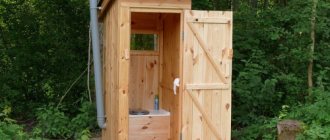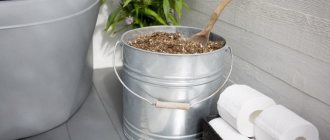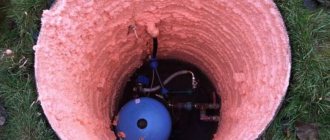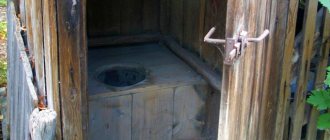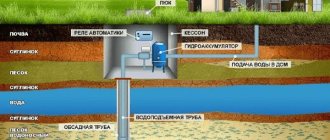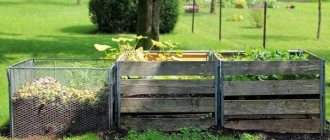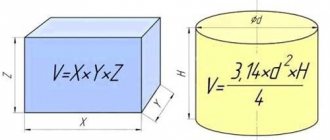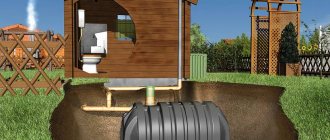Types of toilets without sewerage for a summer cottage
In the modern world, it is quite possible to do without a centralized system. The type of construction with a large pit has long become obsolete, as it has a number of serious disadvantages. Today there is a wide variety of design options and operating principles. Now waste disposal is much faster and safer for the environment. Construction technology also helps improve the appearance and add useful features. What a toilet might look like in a private house, different options for devices not connected to the central sewer system:
- peat,
- chemical,
- biological.
Each of the above methods has its pros and cons. It is very important to decide for yourself which method is suitable for a particular building. The work on installing some toilets is voluminous and expensive. You should also take into account that certain decisions cannot be changed and the chosen construction method will please or disappoint you for many years. It is important to be completely confident in your choice so as not to carry out large-scale reconstructions. This is the only way to choose the perfect toilet in your country house.
Waste disposal using peat technologies
Peat toilet Source eurolain.ru
A modern design that allows you to process waste into fertilizer. The design consists of three parts in a single mechanism. The first part is the container into which the waste arrives. Next, the resulting waste is poured into a dispenser from a second container with fluorine. As a result, until the container is filled, primary processing takes place. After the initial cycle, the container must be emptied. It is important to have a special processing pit that will help make natural fertilizer. It is not difficult to understand why this type of processing is very popular among summer cottage owners. But the peat toilet has its advantages and disadvantages:
Pros:
- Compact sizes are perfect for any home with different layouts.
- Easy to install and does not require radical changes to the building plan.
- Waste is turned into excellent fertilizer for plants.
- The most environmentally friendly way to process waste.
Minuses:
- The container is small and has to be changed frequently.
- Powerful ventilation is needed.
- There is a need to construct a pit for recycling.
See also: Catalog of companies that specialize in water supply and sewerage.
Disposal using a chemical reagent
Dry toilet Source big-stirka.ru
Typically, latrines that use chemicals to clean waste are called dry closets. This is a great self-contained toilet for a country house that won't take up much space. The operating principle and design also involve the use of two containers. A special chemical reagent is poured into the first tank, which helps process the wastewater into a homogeneous mass. The second container is filled with water, which allows you to wash away all impurities. You can collect water manually or run a water pipe into it. Disinfectants can be poured into this tank to more effectively get rid of harmful microorganisms. In this case, the chemistry eliminates all the unpleasant odor, and ventilation is not so important.
Pros:
- Constant ventilation is not necessary, as the odor is effectively eliminated using chemicals.
- The design of the toilet and its components is compact and will fit into any bathroom interior.
- All dangerous germs and bacteria are effectively eliminated by disinfectants, which guarantees hygienic safety
- The process of cleaning and filling the container with a special powder is quite simple; even an inexperienced person can understand the instructions.
Minuses:
- The use of environmentally harmful chemicals is necessary.
- The tank is not very large, so you often have to change the contents, each time purchasing expensive chemicals.
- The design is not suitable for permanent residence or use in a large family.
Biological waste treatment
Scheme of biological waste treatment Source repairblog.ru
Innovative technology that has the best cleaning method for the environment. The principle of operation is based on the introduction of bacteria, which actively decompose and process all harmful substances. For the ecosystem to function properly, it will require a large reservoir underground. This container must be deep enough for bacteria to survive in the cold season. The tank itself is divided into several compartments, which help to undergo several degrees of different cleaning. It is also possible to make antiseptic at home. This method may take a certain amount of time, but it will save some money. And it will be no worse than a toilet in a country house with sewerage.
Pros:
- The best cleaning method for the environment. The soil and air on the site will be safe for both humans and other living beings.
- Quite a large container for collecting waste, which will last for a long time.
- All unpleasant odors and liquids are found outside. The house will always be clean and fresh even without powerful ventilation.
- The tank itself is constantly emptying itself, and all that is needed to clean it is simply to replenish the supply of bacteria.
- You can connect drains from sinks and bathtubs, thereby constructing an autonomous sewer system.
Minuses:
- You need to constantly buy bacteria.
- There is a risk that microorganisms may die in extreme cold.
- The installation process is quite complex and requires construction skills.
Ventilation of waste container
To solve this problem, a hole for an air exchange pipe is provided in the design of the container for collecting and filtering waste. This hole is located on the roof. The diameter should not be less than 100 mm. The material used is standard sewer plastic pipes.
Rules for installing a septic tank ventilation pipe:
- A pipe of smaller diameter (50 mm) is inserted into a 100 mm pipe.
- The structure must rise above the ground by at least 50 cm. Melt and rainwater should not fall into the pit or septic tank. It is better to “extend” the pipe to a height of at least 150-200 cm (above human height) so that the emanating odors do not bother people.
- The end of the hood is equipped with a deflector, which improves the circulation of air masses and protects the pipe from dirt, snow, and leaves.
- The pipe can be insulated to prevent it from becoming clogged with ice in the winter.
If the septic tank is deeply buried in the ground, a special inspection hole is equipped for maintenance work. To facilitate inspection and operation, the ventilation pipe is mounted in this inspection hole.
In many private houses and cottages (especially old ones), the cesspool is located directly under the toilet. The toilet may look like a separate stall or be part of a common building. It doesn't matter for ventilation. In such a situation, the ventilation pipe is mounted in the roof of the cesspool and is installed next to the toilet at a level of at least 200-250 cm. The pipe is located vertically.
When planning a private house or cottage, you should avoid building a toilet over a cesspool. It is better to equip the wastewater tank separately and connect sewer lines from the toilet and other objects to it using pipes.
The location of the cesspool at a distance allows you to install additional ventilation pipes using tees in a convenient place in the fresh air. But it is worth remembering that the installation of such additional structures is acceptable only if there is a flush in the toilet.
If the house has a basement or cellar, the sewer ventilation pipe should not be routed into these rooms. For obvious reasons, the unpleasant odor will be concentrated in the basement. Basement ventilation should also not be connected to the air supply system to the sewer or cesspool.
You should not route the ventilation pipe into the cellar of a private house
What to choose in the end
If the question is what kind of toilet to build in a country house if there is no sewerage system, then it is better to choose a high-quality option for a long time. The ideal solution is biological recycling of waste. All you need to do is periodically monitor the condition of the bacteria. But this method requires a certain construction skill. In order not to waste money, it is better to seek help from professionals who know their business. They will perform high-quality work, the result of which will last for decades. In the meantime, the issue of constructing the entire ecosystem is being resolved, you can use a temporary portable solution in the form of a biocontainer. Remember, if harmful substances get into the ground, it can pose a danger to your health and the well-being of those around you.
Ratings 0
How to make a toilet in the country with your own hands
You have already completed the first two steps: you have chosen the type of toilet and the place to install it. The next step is to choose the sizes. Deciding on them is not so difficult. They told us how to choose the volume of a cesspool - 1.5 cubic meters is enough for 2-3 people, now about what size the toilet house should be. It all depends on your own desire and on the size of the owners. In the standard version, toilets are made in the following sizes:
- height - 220 cm;
- width - 150 cm;
- depth - 100 cm.
These dimensions are convenient for people with average build. They can be changed as you wish. There are no standards.
Toilet houses are most often made of wood. But this is not the rule. It can be made of sheet material such as fiberboard, gypsum fiber board, flat slate, brick and any other building materials, profiled sheet metal, even plastic.
You can build a toilet in your dacha with your own hands from any material. This one is made of corrugated board
The most favorite roofing material for a country house is slate. The installation of a soft roof made of fused materials is inexpensive. In general, you can use any available one. It is attached to a continuous sheathing, so there is not much difference.
Building a village toilet
The last stage is the actual construction. The procedure is determined by what type of toilet you will build. If there is a cesspool, this is done first.
Construction of a village toilet with a cesspool. Excellent option for a summer residence
Construction of a house
A toilet structure without a cesspool is built in exactly the same way as a structure that has such a pit.
It is necessary to lay sheets of roofing material on the constructed foundation. Such a layer will act as a waterproofing layer and will ensure a longer service life of the base. Before assembling the frame of the house, it is necessary to prime and paint . This will provide reliable protection from moisture, and the house will last longer.
Next you need to proceed according to the following scheme.
First you need to assemble a frame from timber and boards. It is installed on the foundation on top of roofing felt.
After this, you need to install vertical racks for support, racks for hanging the door. To secure them, you can use self-tapping screws or bolts. Note that the racks must be installed so that the front pair is higher than the rear pair. This is necessary to ensure a roof slope, which will prevent the accumulation of moisture on the roof surface during operation of the house.
After this, you can install beam structures for subsequent installation of the roof with a small protrusion around the perimeter.
The next step is laying the floors in the interior of the house. In addition, another frame with cladding is constructed - a cabinet or podium for installing a seat. You need to make a hole in the top.
Then it is necessary to lay roofing felt or other roofing covering on the roof crossbar.
Next, you can proceed to cladding the structure both outside and inside. In order for it to hold better, it must be reinforced with cross bars.
If materials that are not resistant to moisture are used to make the cladding, they must be painted and primed.
Next, you can install the door block .
After this, they move on to installing the lighting. The best option is power supply followed by installation of the lamp. In some cases, you can get by with a flashlight or install a battery-powered lamp.
It is necessary to make a hole above the door to provide natural light in the house. After this, you can consider the work of creating a toilet complete. All that remains is to arrange the interior - install the seat and cover. A shelf should be provided for accessories. It is also necessary to place a peat tank and a scoop in the toilet.
Selecting a location
The standards that apply to facilities intended for waste disposal are most important for septic tanks with soil post-treatment, as well as toilets equipped with a cesspool. But for toilets that do not have a cesspool, they must also be observed. This will avoid unpleasant moments in the event of an accident.
- when choosing a place to place a toilet, it is necessary to take into account that it must be located at least 25 m from the source of water supply;
- When choosing a location, you must take into account the wind rose. This will help avoid the appearance of an unpleasant odor near your home and your neighbors’ home;
- The sanitary facility must be located at a distance of at least 1 m from the fence.
Recommendations
Having completed the project and purchased the materials necessary for the work, you should strictly follow the assembly technologies and instructions for specific parts and elements
Particular attention is paid to sealing joints. The modern generation of building materials is characterized by a high level of unification
The parts are standard and fit together exactly. O-rings and gaskets make the joints reliable and durable. When assembling, you need to check the complete set of the entire device, and when assembling, do not ignore the advice offered by the manufacturers.
The toilet at the dacha will live up to expectations if the master follows the technology. Often, both professionals and amateurs use sealants to ensure tightness. Silicone-based compounds are popular today. The elastic structure and good adhesion make it possible to maintain the integrity of the joints even during vibrations and physical stress. Sealant connections are well worth the small investment required to purchase them.
Another important factor in successfully combating odor is the design of the latrine itself. If there is no supply air duct, then you can leave the hole open. When the toilet in the country is equipped with a full ventilation air exchange system, it is better to make a lid. The best way to get rid of the problem of unpleasant odor is to install a regular toilet. Conducting water today does not seem like a difficult task. As a result, the toilet acquires completely new qualities. The toilet has a device for forming a water plug. The drain moves along a sinusoidal curve. Clean water in this place is the most effective way to protect clean air. In this case, it is possible to completely seal the internal volume of the toilet from the sump.
When constructing a latrine adjacent to the main building, you can use another piece of advice from experienced craftsmen. You can fix the exhaust pipe along the wall of the house, extending it to the roof of the main building. The length of the route will increase significantly. This method is borrowed from the practice of stove makers. The higher the pipe, the stronger the draft. With this scheme, it may be necessary to install regulating shut-off valves, since high performance can cause a noticeable draft in the toilet.
You can improve traction using a deflector. Inexpensive device, easily installed at the upper end of the outlet pipe. The special design creates vortex flows, which are converted into directed movement of air masses. According to various estimates, the efficiency of the hood can increase by 10-20%. The device does not require an electrical connection; it operates autonomously, using exclusively aerodynamic laws and rules.

